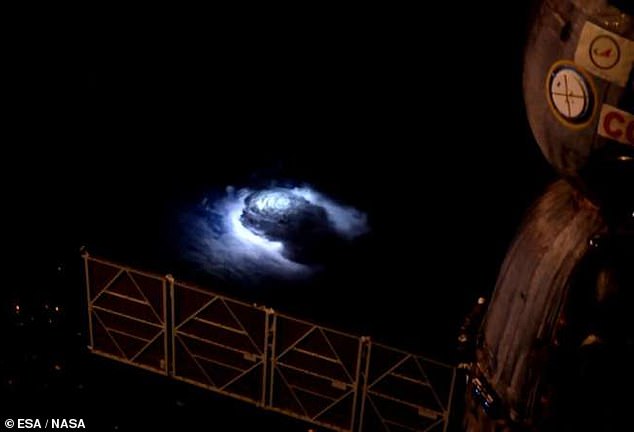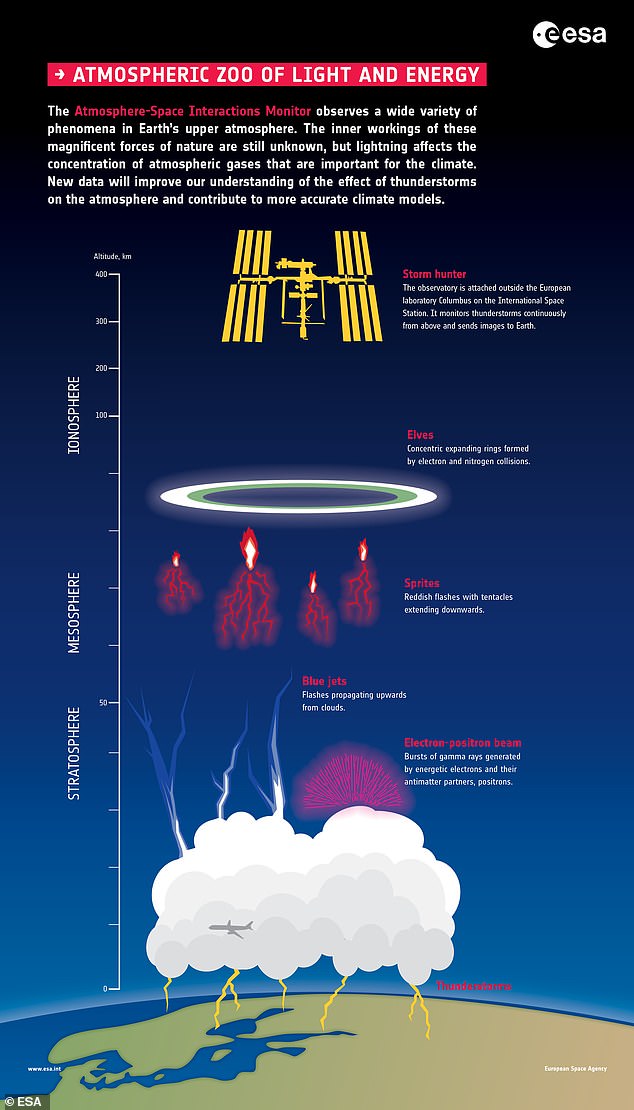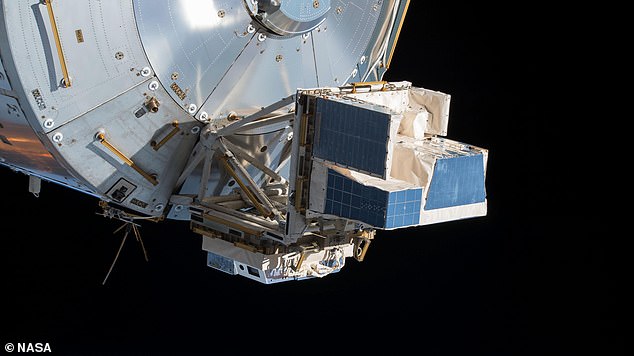Weather: The International Space Station detects blue „jets” of lightning rising from thunderstorms

The International Space Station detects lightning blue ‘jets’ from thunderclouds that could affect greenhouse gas concentrations in the Earth’s atmosphere
- This phenomenon was detected by the European Space Agency’s ASIM instrument
- This is a combination of cameras, photometers, and an x-ray / gamma-ray detector
- The blue plane was seen coming from a cloud over the Pacific island of Nauru
- She reached the stratosphere with „elves”
- Understanding these phenomena can shed light on how lightning was formed
A study revealed blue „jets” of lightning were blasted from a thunderstorm to the top by an instrument on the International Space Station.
This phenomenon was measured by the European Space Agency’s Atmospheric and Space Interactions Monitor (ASIM), and it originated in a cloud top over the island of Nauru in the Pacific Ocean.
It reached the stratosphere – experts believe the blue jets can span distances of up to 31 miles (50 km) – and lasted less than a second.
Because blue jets form above the cloud layer, they are very difficult to see – and study – from below on Earth’s surface.
It orbits about 249 miles (400 km) around the clouds, however, the International Space Station is given unobstructed visibility.
Understanding blue jet formation – and other energetic phenomena in and above the stratosphere – can reveal clues about how lightning occurs.
Experts also believe that blue jets may play a role in influencing greenhouse gas concentrations in the atmosphere – something that studies need to investigate further.

A study revealed blue „jets” of lightning were blasted from a thunderstorm to the top by an instrument on the International Space Station. Pictured is a photo of a thunderstorm captured by astronaut Andreas Mogensen from the International Space Station in 2015
ASIM – a set of optical cameras and photometers, plus an x-ray and gamma-ray detector – was installed on the International Space Station in 2018.
The screen is designed to search for electrical discharges that arise in inclement weather and extend over thunderstorms into the upper atmosphere.
The researchers report that the blue jet recently discovered by ASIM was set off by an intense series of five flashes of 10 microseconds each.
The flash also produced so-called „elves” – expanding rings of light and ultraviolet emissions that appear at the bottom of the ionosphere, 50 miles (80 km) above the Earth’s surface.
They are formed by electrons and radio waves that interact with the atmosphere.
The researchers write in their paper: „ Blue jets are like lightning, which are electrical discharges in the atmosphere for a period of several hundred thousandths of a second, and turn into cones as they propagate from the top of thunder clouds to the stratosphere. ”
And they continued: „It is believed that they started an electrical collapse between the upper positively charged region of the cloud and a layer of negative charge at the boundary of the cloud and in the air above it.”
The avalanche forms a leader that moves to the signs when spreading upwards. However, the leader’s characteristics, and the height to which he extends over the clouds, are not well marked.

Understanding the formation of blue jets – and other energetic phenomena in and above the stratosphere, as seen in the image – can reveal clues about how lightning occurs.

This phenomenon was measured by the European Space Agency’s Observer of Atmospheric and Space Interactions (pictured), and this phenomenon originated in a cloud top over the island of Nauru in the Pacific Ocean.
„This paper sheds light on many of the new phenomena that ASIM detects above thunderstorms,” said Astrid Orr, European Space Agency (ESA) physical science coordinator for human spaceflight and robotics.
„[It] It shows that we still have a lot to discover and learn about our universe.
„Congratulations to all the scientists and university teams who made this happen as well as the engineers who built the observatory and the support teams on the ground that operate ASIM,” she said.
It concluded that the effort was „truly international cooperation that led to startling discoveries”.
The full results of the study are published in the journal nature.
Ads

„Creator. Amator de cafea. Iubitor de internet. Organizator. Geek de cultură pop. Fan de televiziune. Mândru foodaholic.”
